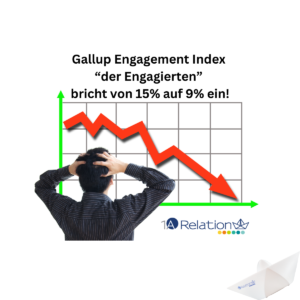The basis of successful personalization is the interaction of the three core elements: data, content and technology (for delivery and dispatch). Good content is important to get more data. To play out personalized content, you also need the right tools for your own purposes or goals. But without good address and data quality, even the best tool and the most exciting content are useless. And of course, a plan (or strategy) for what you want to achieve with it is also part of it.
But first, let’s take a look at how data contributes to successful personalization.
Become a data collector and user!
Nobody wants to hear the sentence “Data is the new gold” anymore. Nevertheless, anything you know or can learn about your customers can help to provide the customer with a better customer experience through personalized elements. A zip code or geolocation, for example, helps to recommend nearby merchants. Conclusions can also be drawn about the preferences of your customers from the search behavior or the device used.
The customer data landscape and the creation of personalized customer experiences are more relevant today than ever. Many customers expect companies to provide them with content tailored to their interests and wishes.
However, the topic of data protection is now also very important to most customers, so you should communicate your handling of customer data transparently. Satisfied customers who trust a company in handling their personal data also reveal more or high-quality data. This better data quality then creates the basis for appropriate personalization and optimized content.
Silo thinking is a thing of the past
Companies needed to create touchpoints as quickly as consumers increasingly embraced new technologies and channels. In most cases, this led to the introduction of channels and systems that did not integrate the data obtained with them into the existing systems. Data silos have been created with the result that data is confusing, repetitive in different databases and there are no complete data profiles for the respective customers.
To deliver an optimal customer experience, you need to break down the existing data silos. A data audit helps determine which data exists where in your company. Then, you need to set up a strategy that ensures that the data you collect is properly stored, accurate, consistent, and consistent.
To process and integrate newly preserved data into your systems, you need to assess data sources by how well they integrate with your data systems, i.e. whether the data can be imported and exported across systems.
“We expect customer loyalty silos to be one of the top three causes of customer dissatisfaction for businesses across all industry segments by 2020.” – Gartner
Source: https://www.progress.com/de/blogs/6-herausforderungen-bei-der-personalisierung-erklaert
Another important point that is often forgotten: data becomes obsolete! So in the sense of an optimal customer approach and personalization, make sure to always keep your data as up-to-date as possible. Because every year about 10% of the data becomes obsolete!
We know this from a reliable source
Data can be obtained in different ways: the customer can give it to you voluntarily, the company can collect or record it itself in dealing with the customer or buy it in. Data ownership – as in the first two cases – is advantageous in that you can process the data as you like. With regard to the GDPR, the possession of the data is also an important prerequisite for the deletion of data or, for example, to ensure “the right to be forgotten”.
Currently, four different types of data are distinguished in the context of data collection: zero-, first-, second- and third-party data. All are based on different acquisition methods and vary in scope and accuracy.
Third-party data – the dwindling source
Third-party data is purchased, often aggregated data, i.e. a large amount of data collected by third parties is combined into a single value. As a rule, this data is not personal. Third-party data can vary greatly in your data quality. So far, however, they have been of some importance when companies wanted to obtain information about non-customers. Market analyses, for example, can be carried out on this database. They also provide all the information that a customer, prospective customer or business partner does not want to disclose about themselves, such as risk indicators on finance or compliance.
Do you want to read the full article including the other 4 parts?
Then sign up for free and get the personalization guide.
Click here for the 1st part of the article.
Note: This is a machine translation. It is neither 100% complete nor 100% correct. We can therefore not guarantee the result.












